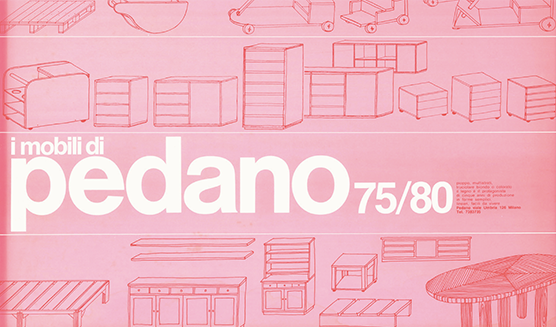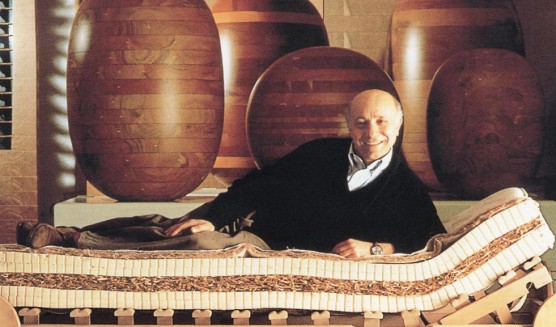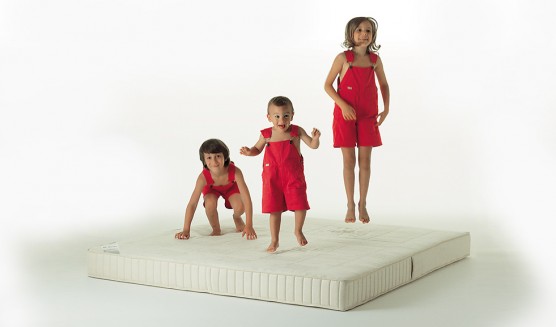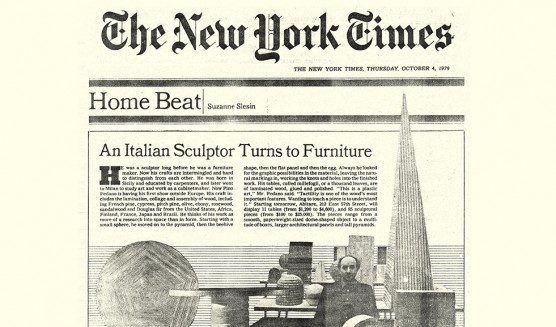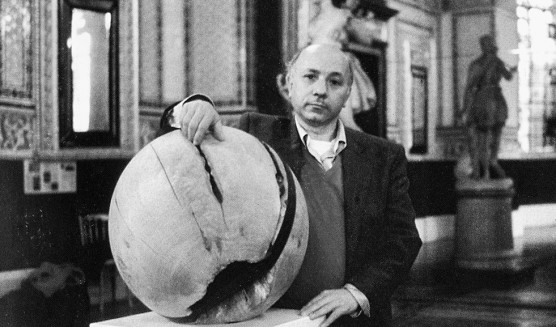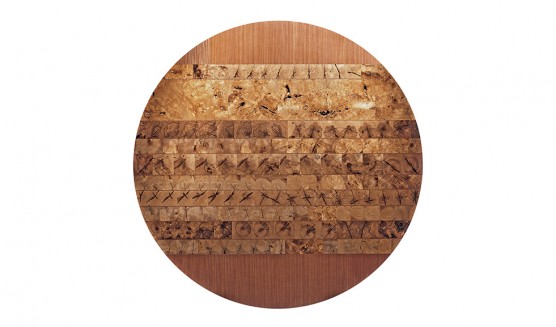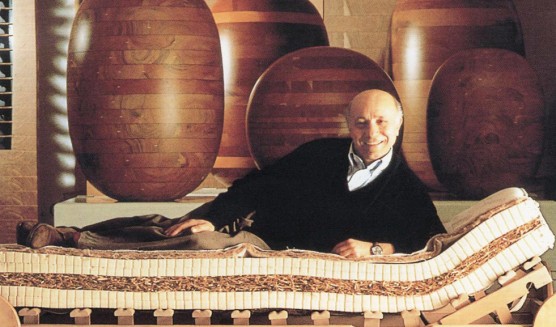Pino Pedano was born into a family of agricultural labourers on 12 January 1944 in Pettineo, a small village in the district of Messina not far from the sea. When he was seven he was apprenticed to a carpenter, and at the age of seventeen he moved to Milan where he worked during the day and studied at night for his art college diploma. In 1966 he opened his first crafts studio in Via Santa Maria alla Porta and began to associate with artists, designers and architects. At the same time he started to take an interest in politics, joining Giovanni Marcoraʼs group in a period of great cultural and social upheaval.
In the early days of his business he refurbished fashionable night clubs, such as Number One, Nepentha and Good Mood, the latter decorated entirely with vertical black mirror stripes. 1974 was a crucial year for the artist. This was when he met Isa Tutino Vercelloni, director of Casa Vogue, who helped him to organise the opening party of his new company Pedano Arredamenti in May of that year. That evening Renato Cardazzo, the director of Galleria dʼArte del Naviglio in Milan, was one of the guests. Shortly afterwards Pedano formulated and patented a system for processing multilayered wood, which he called millefogli. He presented it for the first time at the Salone del Mobile in Milan, and it was shown on the cover of Casa Vogue. In 1975 he opened the Pedano Shop where he began to design, make and sell objects for the home in a new style which he called “anti-design”.
At this time he was busy working on an original project based on the expressive properties of wood: “Pedano is the sculptor of interior wood—wrote Tommaso Trini—he works the wood as though it had an unconscious”). In 1975 Renato Cardazzo commissioned an exhibition of his works at Galleria del Naviglio. Inaugurated on 29 January 1976, ʻI legni di Pedanoʼ was an immediate success. Critics, including Luigi Carluccio of Panorama, took an interest in him straightaway. Carluccio observed “The most fascinating aspect of his work is that, starting from the modest floor of the carpenterʼs shop, it comes to the attention of gallery directors and art historians. He interests them, I believe, because he represents the missing link: the link between craft and art, between the effort of creation and the finished artwork, which has vanished”. In the same year he exhibited with Cardazzo at the fairs of Bologna and Basel and in galleries in Venice and Milan.
Pedanoʼs fame spread around the world. In 1977 Parisian gallery directors Paul and Jean Facchetti, whom he had met in Bologna, held an exhibition of his work in Paris. The closing date of the exhibition, inaugurated in May, was extended from June until October. The Facchettis also organised the exhibition in Zürich in the following year. The inaugural dinner took place at Kronenhalle, a haunt of the most important artists of the twentieth century. In 2006, the drawing he did for the guestbook was included, with others by Chagall, Miró and Picasso, to be published in the book that celebrated the 90th birthday of Gustav Zumsteg, the owner of the restaurant. In 1979 Pedano held an exhibition in New York at Abitare gallery.
The years between the American exhibition and the next one, held in 1984, again at Galleria del Naviglio, where he only exhibited totems, were years of reflection and experimentation for Pedano. At the 1984 exhibition Pedano met Annette Felke, a German student, and they married three months later. They went on to have three children: Isa, Francesco and Stefano.
In May 1984 he met Keith Haring, for whom he produced several large cut-outs. It was a fruitful encounter for both, and Pedano gave the artist technical advice on the use of materials. In 1989, Credito Italiano in Piazza Cordusio, Milan, thanks to Lucio Rondelliʼs willingness, opened its central hall to contemporary art for the first time with a solo exhibition of Pedanoʼs work. The new phase culminated with Pedanoʼs exhibition held at the Victoria and Albert Museum in London in 1990. This occasion saw the presentation of the monograph Pedano. Opere 1975–1989, edited by Carlo Bertelli and published by Mondadori Arte. In September that year he took part in the exhibition ʻ30 architectsʼ at Ansaldo in Milan. In 1992 Milan City Council organised a solo exhibition at Rotonda della Besana with the title ʻIl Giardino Segretoʼ, curated by Carlo Bertelli. The catalogue was published by Electa.
In June 1995 he was taken into San Raffaele hospital in Milan and diagnosed with an advanced lung tumour and a serious form of diabetes that had lain undetected for ten years. He was given three months to live. Pedano prayed to Padre Pio, whom he worshipped devoutly. At 5am on 7 July he woke up in his hospital bed enveloped in a blinding white light and felt the disease leaving his body and life returning. This marked a crucial turning point for the artist. For ten years he stopped making sculptures and concentrated on his family and his work. Since the beginning of the 1990s his cabinetmaking business has focussed on the concept of “healthy sleeping”, through the use of natural materials and the design of special orthopaedic systems that improve the quality of sleep and life.
Encouraged by friends and his own family, in 2002 he gradually began to return to art, influenced by a new spirituality. On the advice of Carlo Bertelli he held an exhibition of recent works at Oratorio della Passione at the Basilica of SantʼAmbrogio in 2006. The exhibition, entitled ʻLa Vita Nuovaʼ, was visited by 3000 people in the space of just a few days and marked Pedanoʼs return to the art world. On that occasion he met Pierluigi Lia, professor of theology at the Catholic University, with whom he developed the project for the large works of the 2008 exhibition “Luce” at Santa Maria Annunciata in Chiesa Rossa in Milan. In 2010 he sets up the Chapel of the new Hospital of Vimercate, using the symbol of the “Cross” created in 2001, and performs a retrospective exhibition at the Museum of Contemporary Sacred Art in Milan. Pedano lives and works in Milan.
